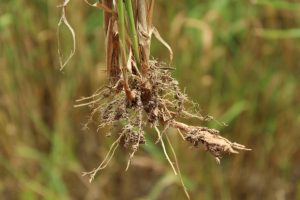Chapter 3: Vegetative Reproduction
Chapter Authors
Dr. Deana Namuth-Covert, Professor and Ms. Amy Kohmetscher, Instructional Designer
Ohio State – Agricultural Technical Institute
College of Food, Agricultural and Environmental Sciences
The Ohio State University

As mentioned in the previous chapter, from the weed population’s perspective, part of what makes weeds successful is being able to reproduce and create future generations. Clearly weeds are effective at this since they grow mostly everywhere no matter the conditions. To manage weeds, though, it is crucial to figure out how they are able to thrive in so many varied conditions. In this chapter we will describe the various ways weeds can reproduce using vegetative structures, rather than producing seeds. Part of this discussion entails following the flow of sugars in the plants throughout the growing season. We will also compare and contrast reproduction in perennials and annuals. Finally, we will explore how weeds adapt to newly cleared fields from a broader, ecological perspective.